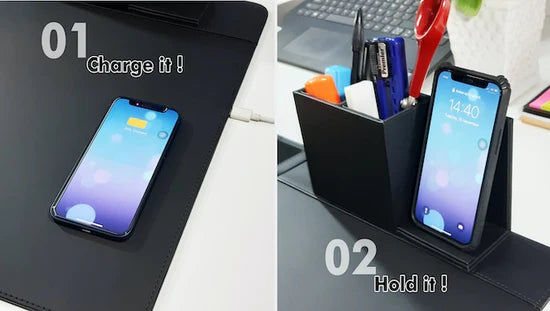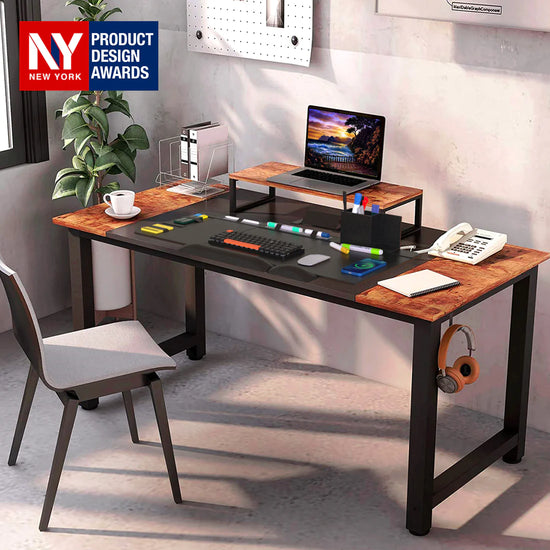Is your planner so stuffed with tasks, meetings, and lists that it’s difficult to use? Is it a mix of too many parts of your life – work, social life, family events, school assignments, self-care? You may prefer using both a weekly and a daily planner, instead of just one or the other. Using both types of planners can help you better determine your weekly and daily goals and the steps needed to meet them.
So, what’s the difference between weekly and daily layouts? Weekly layouts tend to offer an overall view of your week. Daily layouts give you space to get into the details. Think of it this way: use weekly layouts to plan out your weekly goals and use the daily planner to detail your steps in accomplishing those weekly goals.
How can using a combination of a weekly and daily planner help you?
- First, do a brain dump. This is always a great way to get all those pesky thoughts and tasks out of your head so you can see everything you want or need to do. What are you currently tracking? Include everything – work tasks, meetings, social events, family events, chores, finances – that you currently add to your planner. Then go through it and take out anything that doesn’t work for you. Maybe you’ve tried a specific habit tracker that others use, but it just doesn’t seem to be relevant anymore. Nix it! Now, is there anything missing that you want to pay more attention to? Are you trying to eat healthier, or get more exercise? Add meal planning and exercise tracking. Is your big goal to save for a house down payment? Make sure that is a focus in your planner and that you create the roadmap to get there by writing down the necessary steps.
-
Check out what is available in planners. Don’t make this too difficult, as looking through every planner on the market can be a bit overwhelming. Look through a few online and at brick-and-mortar stores to see what you think will work. Some things to pay attention to:
- Do you need Saturday and Sunday to be the same size as the rest of the week?
- Do you prefer a horizontal or vertical layout?
- Do you like everything to be set up for you, or do you prefer lots of extra note pages for brainstorming?
- Do you prefer lined, bulleted, or blank pages? Sometimes you can even have graph paper as your background.
- How big is your handwriting? Bigger handwriting requires larger spaces.
- Do you prefer a Sunday or Monday (or other) start of the week?
- Are there any sections of your current planner that you don’t use or other sections you’d like to have?
- Do you prefer undated or dated planners? There are pros and cons to each.
If you have decided that using both a weekly and daily planner may work better for you than a single catch-all planner, determine your intention for each space. Otherwise, you may still be losing focus.

Some ideas for successfully using both include:
- Tracking multiple schedules. If you are tracking your work and/or school schedule, your family’s work and/or school schedules, your personal life, goals, habits, finances, reading, fitness, and more in one planner, you may not be getting as detailed as you’d like. You may also be overwhelmed by all that information in one space. Try using your weekly planner for all scheduling and your daily planner for your lists. For instance, add family events to your weekly calendar, but time block them in your daily calendar – including any travel time – so you can see how they affect the rest of your day. You can then plan accordingly around that two-hour school concert that will actually take four hours total to get ready, get there an hour early for your child’s rehearsal, stay for the concert, talk with people afterward, then come home.
- Balance your work and home life. A popular way people use two planners is to use one for home, one for work. One caveat here is that any work function that takes place outside of the normal work schedule should also be reflected in your home planner if it takes away from your personal schedule. Do you have a long daily task list at home but not so much to write down at work, or vice-versa? Think about how you can best plan for both.

- Use the weekly for your schedule, the daily for the details. Schedule everything in your weekly planner: weekly goals, meals, cleaning, bill-paying, doctor appointments, etc. Use the daily planner to detail steps, lists, and habits. For example, you have a big event planned and need to finish a lot of tasks on tight deadlines for it to be successful. Schedule your weekly goals and appointments related to the event in your weekly planner, but break everything down into the daily tasks you need to do to meet those goals. If you have a day where you are already busy, schedule your event tasks for less busy days.
- Habit tracking. Track habits where it makes sense for you. Are there daily habits you are trying to start or continue? Maybe you want to journal every day. Track that in your daily planner. If there are habits that you don’t want to do every day but once a week or more often, like watering plants, you can track those in your weekly planner. Do whatever makes sense to you.
- Goal tracking. Using both a weekly and daily planner can be extremely helpful for planning your goals. In your daily planner, focus on short-term goals that are tied to your main goals. These should be specific and manageable. Split your big goals into mini-goals and see which two or three of these tasks you can do today. Use your weekly planner for a wider overview of your plans, to see how your mini-goals impact the rest of your week. Review your week to see your successes and where you need to improve. Are there specific days you didn’t do well, and do you know why? Write it down.
Planning can greatly reduce your stress levels and helps raise your confidence, knowing you have a plan to reach your attainable goals. It will also make you better prepared for circumstances outside your control that make you fall back to a contingency plan. Remember: Planners are tools to help you better organize your life. Don’t let your planner(s) bully you. Take charge and use them in ways that make the most sense to you.
Achiever Planner II is truly an all-in-one yearly planner that combines the features of a daily planner, weekly planner, and monthly planner. This allows a person to set goals and tasks day-by-day or week-by-week and monitor and analyze monthly and yearly goals.

Related Blogs:
Which Achiever Planner is Right for You?
Using Stickers for Planner Productivity





